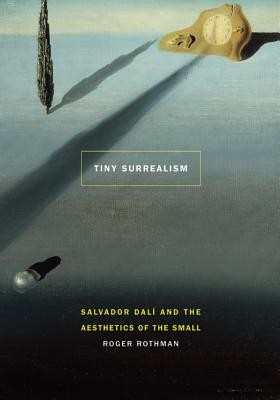
- We will send in 10–14 business days.
- Author: Roger Rothman
- Publisher: University of Nebraska Press
- ISBN-10: 0803280882
- ISBN-13: 9780803280885
- Format: 17 x 24.9 x 1.5 cm, softcover
- Language: English
- SAVE -10% with code: EXTRA
Reviews
Description
Though one of the most popular artists of the twentieth century, Salvador Dalà is typically seen as peripheral to the dominant practices of modernist painting. Roger Rothman's Tiny Surrealism argues that this marginal position is itself a coherent response to modernism. It demonstrates how DalÃ's practice was organized around the logic of the inconsequential by focusing on DalÃ's identification with things that are literally tiny (ants, sewing needles, breadcrumbs, blackheads, etc.) as well as those that are metaphorically small (the trivial, the weak, the superficial, and the anachronistic). In addition to addressing the imagery of DalÃ's paintings, Tiny Surrealism demonstrates that the logic of the small was a fundamental factor in DalÃ's adherence to the techniques of miniaturist illusionism. Long derided as antimodernist and kitsch, Rothman demonstrates that DalÃ's style was itself a strategy of the small aimed at subverting the dominant values of modern painting.
Tiny Surrealism not only examines DalÃ's pictorial work, it also probes the artist's many public pronouncements and private correspondences. By attending to the peculiarities of DalÃ's technique and examining overlooked aspects of his writings, Tiny Surrealism is the first study to detail his deliberate subversion of modernist orthodoxies.
Roger Rothman is a professor of art history at Bucknell University.
EXTRA 10 % discount with code: EXTRA
The promotion ends in 10d.10:03:58
The discount code is valid when purchasing from 10 €. Discounts do not stack.
- Author: Roger Rothman
- Publisher: University of Nebraska Press
- ISBN-10: 0803280882
- ISBN-13: 9780803280885
- Format: 17 x 24.9 x 1.5 cm, softcover
- Language: English English
Though one of the most popular artists of the twentieth century, Salvador Dalà is typically seen as peripheral to the dominant practices of modernist painting. Roger Rothman's Tiny Surrealism argues that this marginal position is itself a coherent response to modernism. It demonstrates how DalÃ's practice was organized around the logic of the inconsequential by focusing on DalÃ's identification with things that are literally tiny (ants, sewing needles, breadcrumbs, blackheads, etc.) as well as those that are metaphorically small (the trivial, the weak, the superficial, and the anachronistic). In addition to addressing the imagery of DalÃ's paintings, Tiny Surrealism demonstrates that the logic of the small was a fundamental factor in DalÃ's adherence to the techniques of miniaturist illusionism. Long derided as antimodernist and kitsch, Rothman demonstrates that DalÃ's style was itself a strategy of the small aimed at subverting the dominant values of modern painting.
Tiny Surrealism not only examines DalÃ's pictorial work, it also probes the artist's many public pronouncements and private correspondences. By attending to the peculiarities of DalÃ's technique and examining overlooked aspects of his writings, Tiny Surrealism is the first study to detail his deliberate subversion of modernist orthodoxies.
Roger Rothman is a professor of art history at Bucknell University.


Reviews